Sylvan Crafts – 4-Sided Die / Polyhedron Assembly
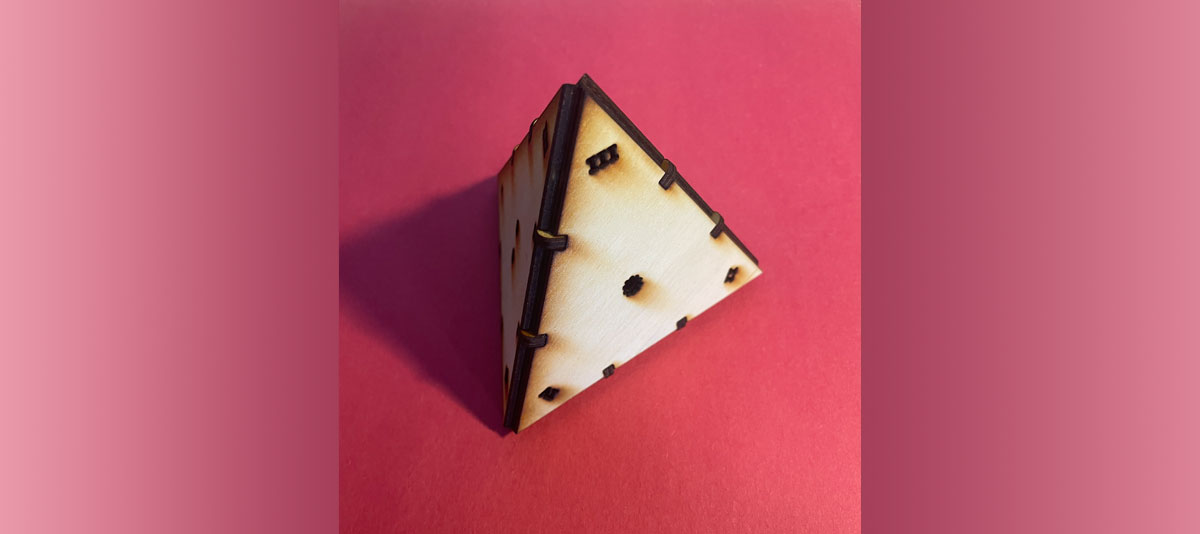
Things to consider before you assemble your Sylvan Crafts kit:
This model was laser cut from natural wood so will have burn marks and scorching. The burns and scorching actually add to the appeal and aesthetics of the wood, so we recommend you assemble your kit with the scorched side of each piece facing outward, for optimal attractiveness.
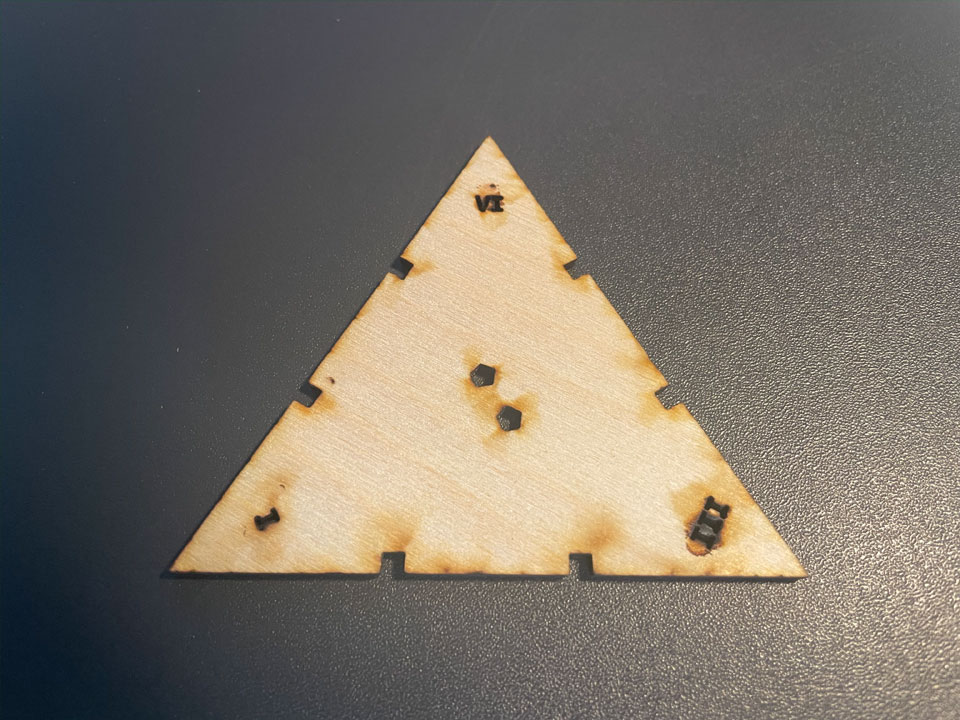
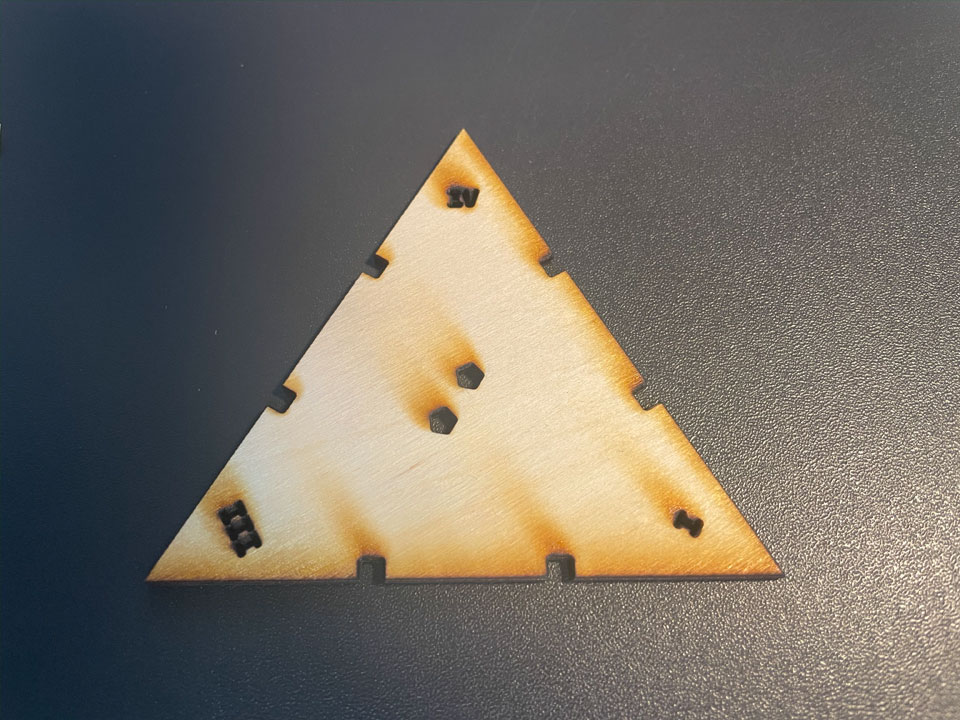
We recommend completing assembly in one sitting; although it is certainly possible to assemble the kit in multiple sessions. Assembling in one sitting allows for you to work while the glue is still a bit flexible, especially if something is slightly out of alignment. A typical first-timer assembly of this kit should take about 15–20 minutes.
Handy Tip:
Take a quick scroll through all the instructions below to familiarize yourself with the project before starting.Equipment Required:
- A good quality wood glue, such as Titebond/Titebond II (available at any home store). Wood glue will stay flexible as you work with the pieces.
- A craft mat, or some other work surface (not your nana's good dining room table) where you don't have to worry about glue getting on anything. Kitchen parchment paper (used in baking) makes a wonderful work surface when taped flat with painters’ tape.
- A handful of wooden toothpicks for applying glue.
Prepare for Assembly:
There are two types of pieces in this kit:
4 polygon face pieces
12 mushroom-shaped joint pieces
Separate Face Pieces and Joint Pieces From the Board:
- Peel top adhesive layer back carefully – exposing all pieces of the kit. NOTE: Some of the cutouts for the pips (holes in the face pieces) and sprue (junk between joint pieces) may stick to the adhesive paper. This is okay, as long as none of the small joint pieces are accidentally discarded.
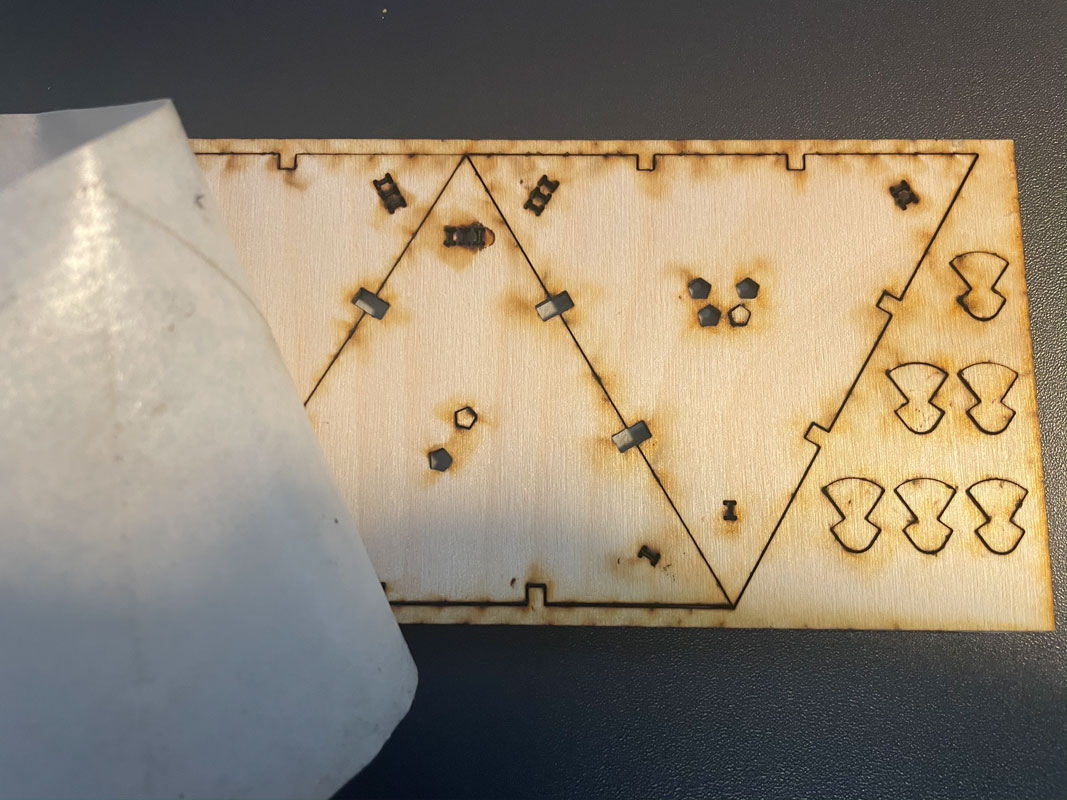
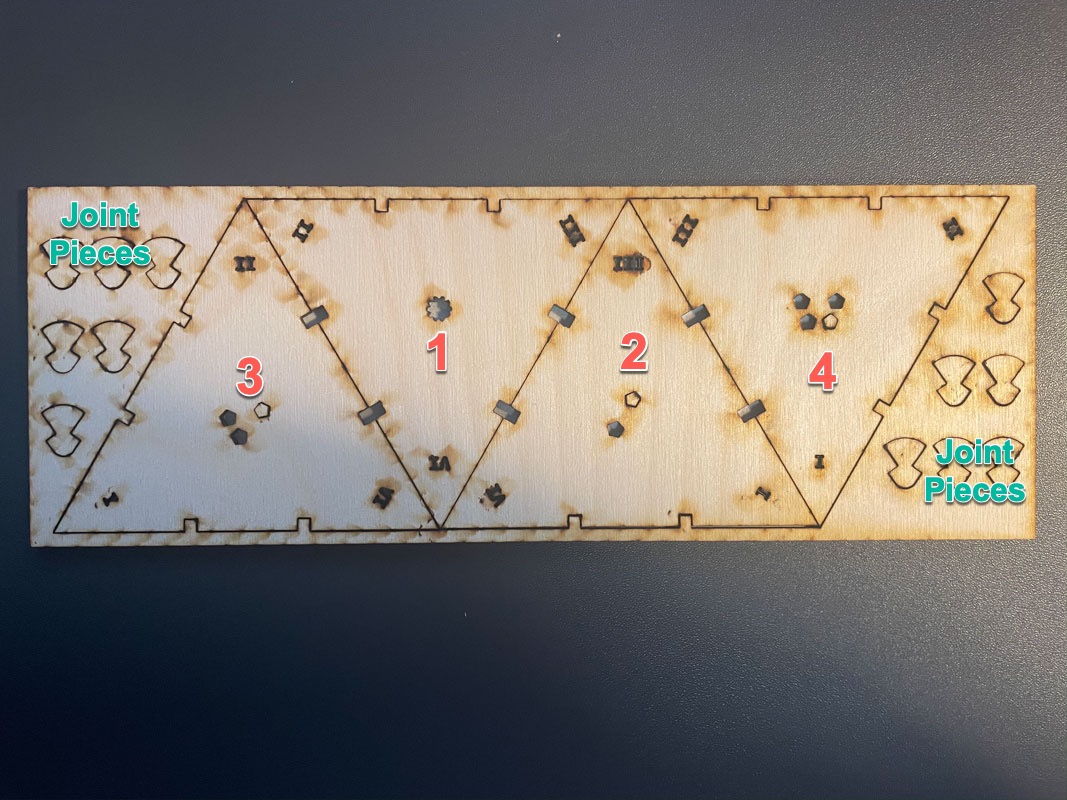
- Carefully remove all 12 joint pieces (the little mushroom looking guys) and place to the side – preferably in a little dish to keep them together.
- Carefully lift out the 4 polygonal face pieces. You may need to use a toothpick to pop out any cutouts left in the pips or roman numerals of the face pieces. Usually the cutouts will stay stuck to the bottom adhesive paper. Stack the face pieces nearby in numeric order. Once you are sure there are no joint pieces or face pieces left, you can discard the board in your green yard waste recycle bin (adhesive paper and all).
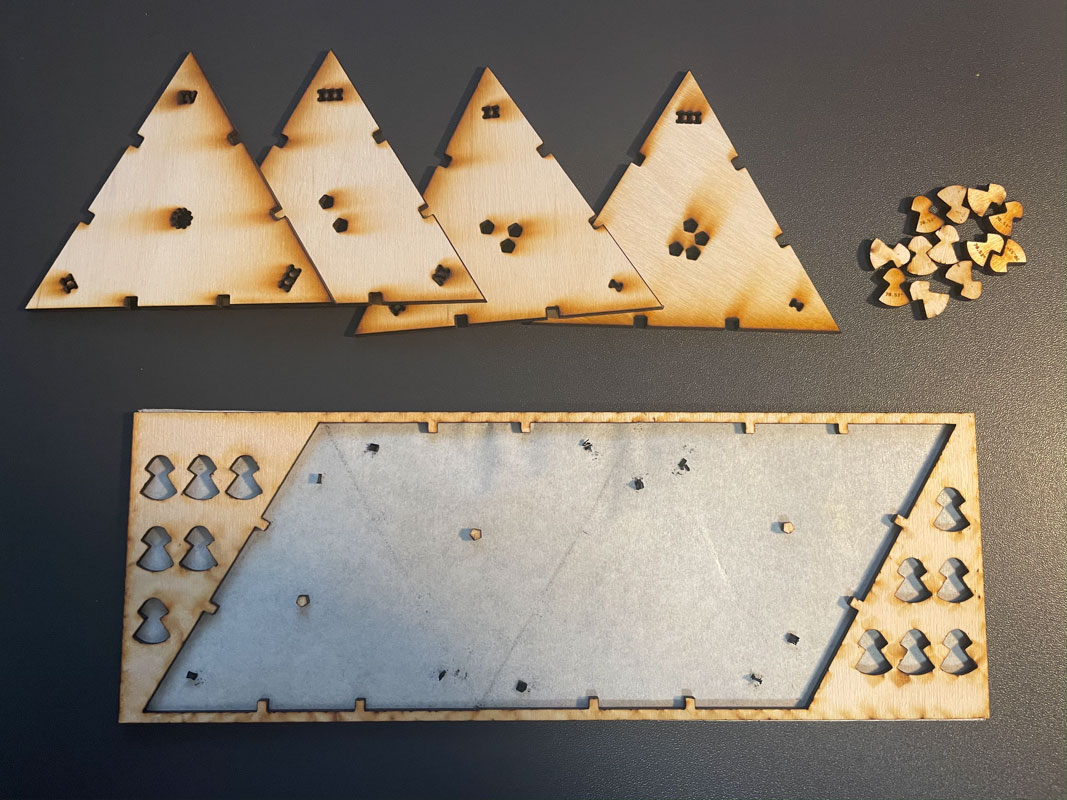
Assembly:
Put a blob of glue (about the size of a bean) on your work surface so you can easily dip your toothpick into it during assembly. Start a fresh glue puddle as needed.Important:
You will only be adding glue directly to the joint pieces; never to the face pieces themselves. The right way to glue a joint piece is to use a small amount of glue and with your toothpick, just cover the inner edges of one side of a joint piece. See the pink highlighted areas in the image below for where to apply glue.
Remember:
Keep the scorched/charred side on the outside of the assembled kit so you can enjoy the beautiful coloration of the wood.Prepping Your First Face Pieces:
Unlike other polyhedron dice kits in this series, the D4 faces also have roman numerals in each corner to let you know what number you rolled. Since this die does not have a flat surface, these roman numerals, as seen in image A below represent the rolled number, and will be the same on each of the three faces at each corner of this 4-sided die.
- Starting with face piece #1. Flip it over so the pale side is facing up (non charred side). Glue 6 joint pieces to the #1 face piece as seen in image B below. As the glue begins to dry, snug the joint pieces again against the face piece to ensure they are seated tightly. Set aside to dry for 3 minutes.
- Select face piece #2. Glue two joint pieces on the edge between numerals I and IV. Also glue two joints to the edge between numerals I and III. This should look like image C below.
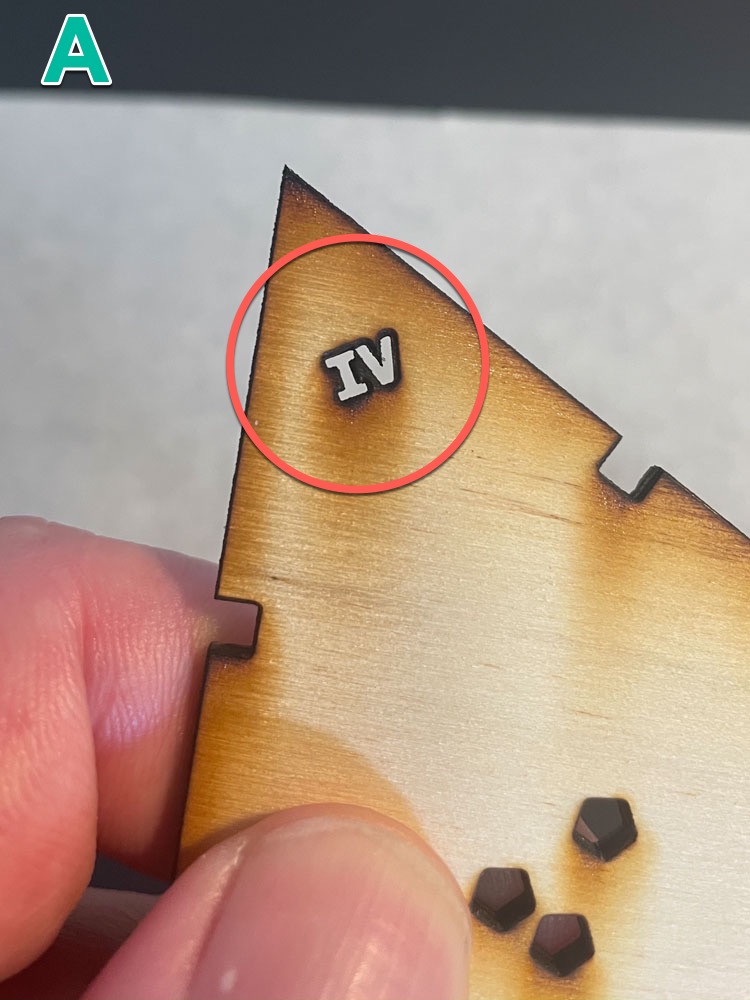
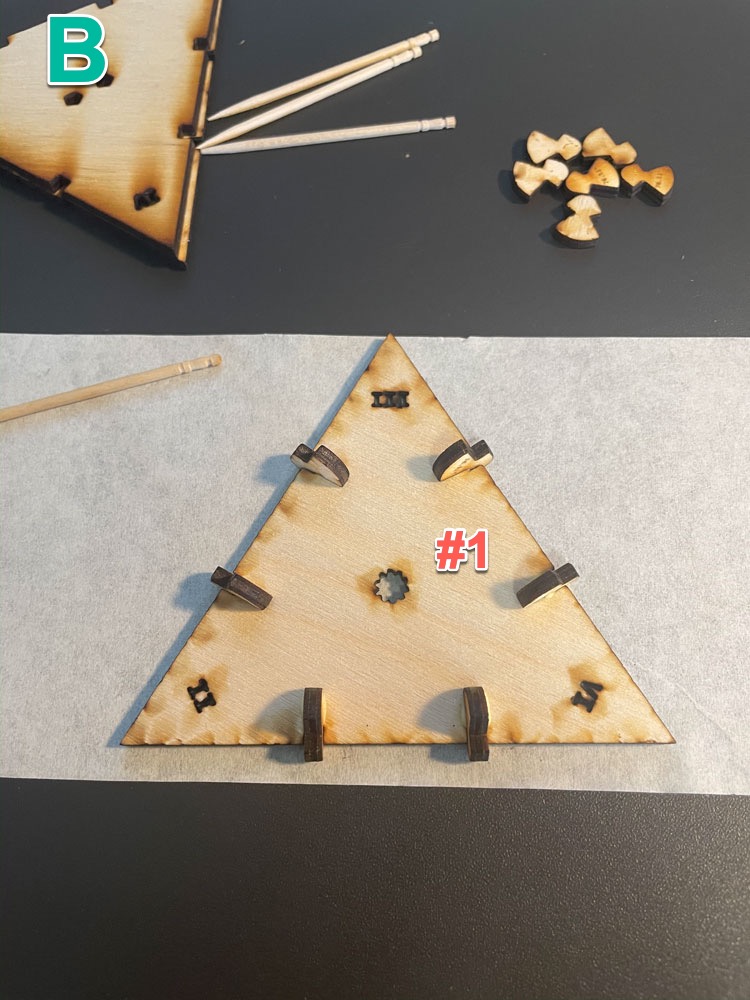
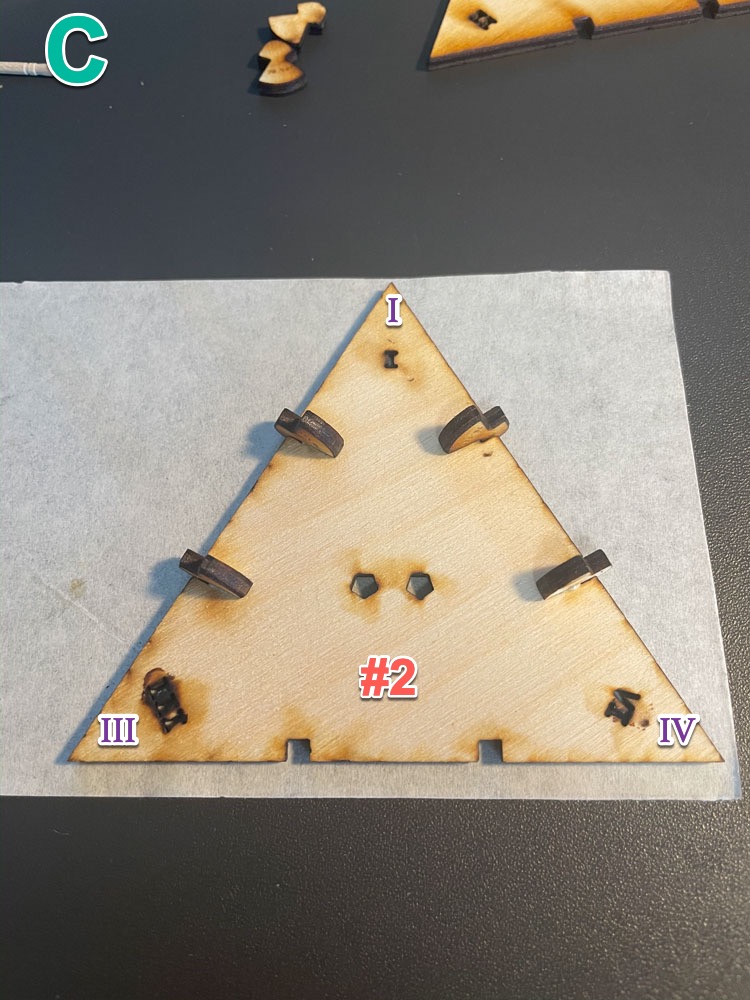
- Select face piece #4. Glue two joint pieces on the edge between numerals I and II as seen in image D below. Allow to dry for 2 minutes.
Assembling the Faces:
- Apply glue to all of the joints on face piece #1. Starting with face #2, attach the edge of face #2 to the corresponding edge of face #1 that has roman numerals III and IV as seen in image E below.
- Add glue to the two joints on face #2 on the edge between the roman numerals I and III. Attach face piece #4 between face #1 and face #2 making sure that the roman numerals on face #4 match the roman numerals on the other two faces. Your construction should look like image F below.
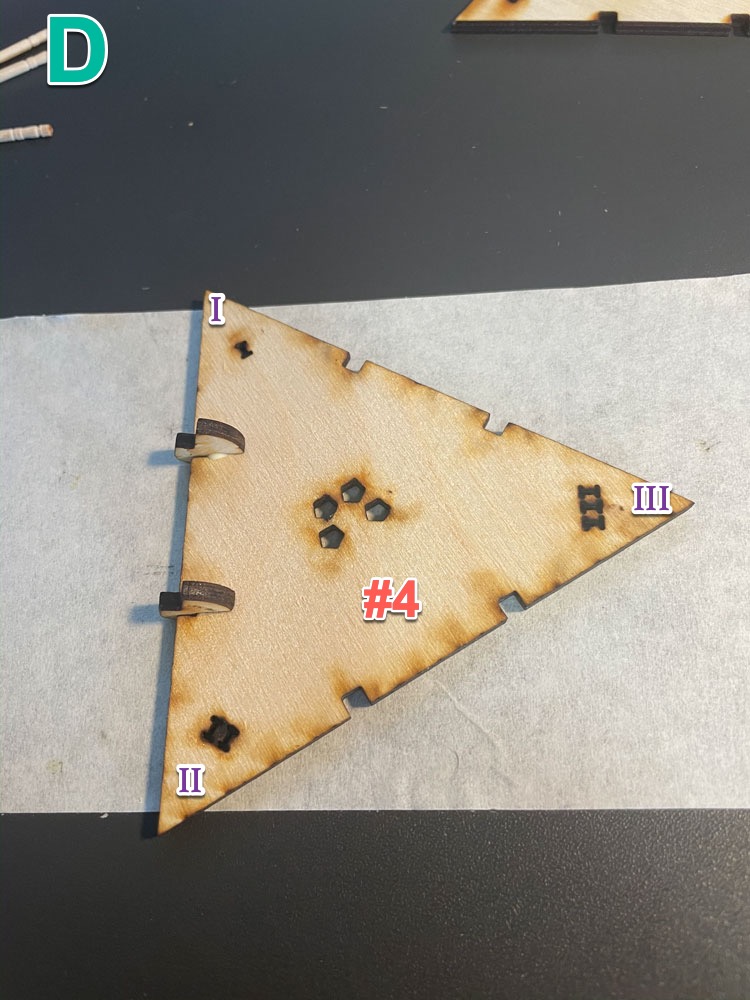
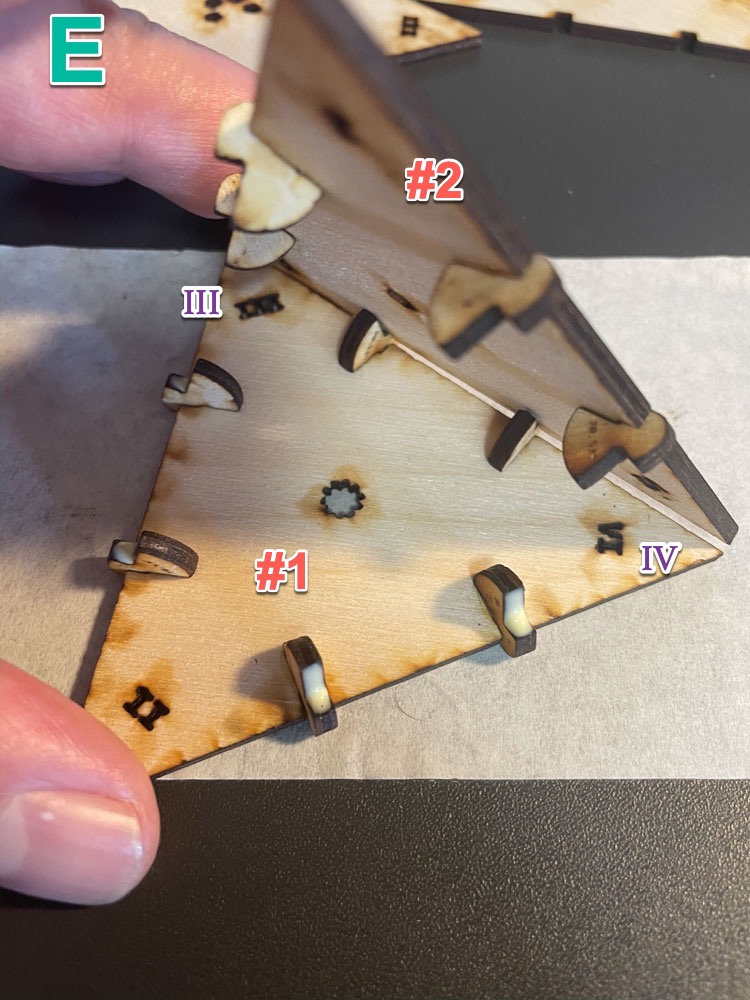
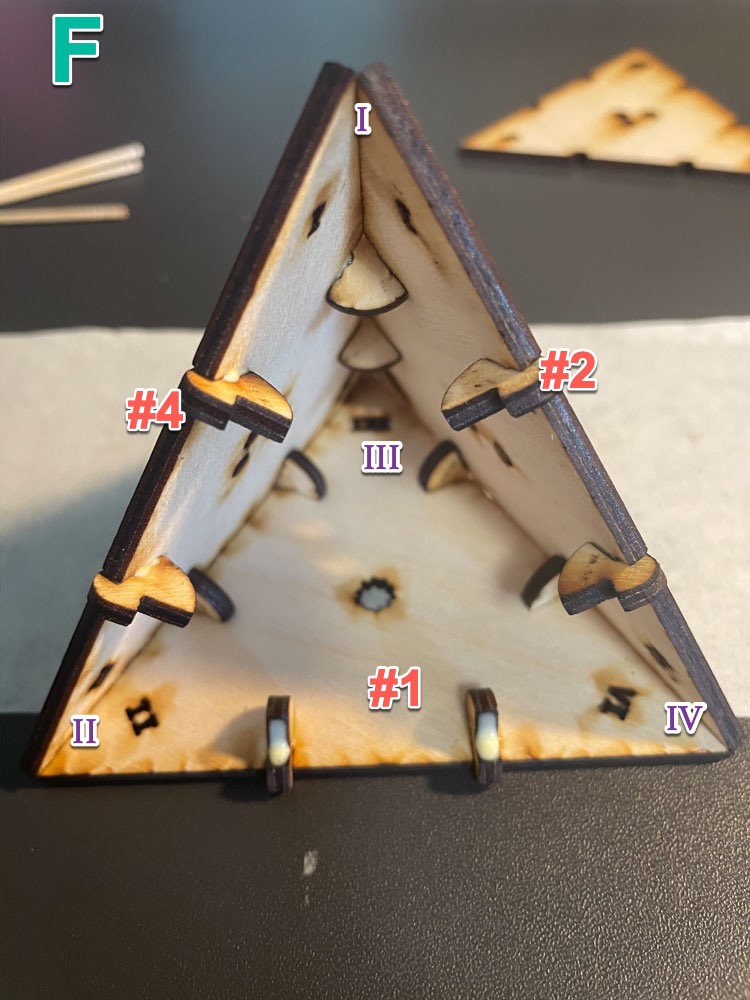
- While holding the semi-completed polyhedron in your hand, apply glue to the remaining joint pieces that do not already have glue (see image G below).
- Take the last face piece, #3, and align it with the other face pieces so that its corners match the orientation of roman numerals on the other face pieces, then attach face piece #3 as seen in image H below. your completed project can be seen in image I below.
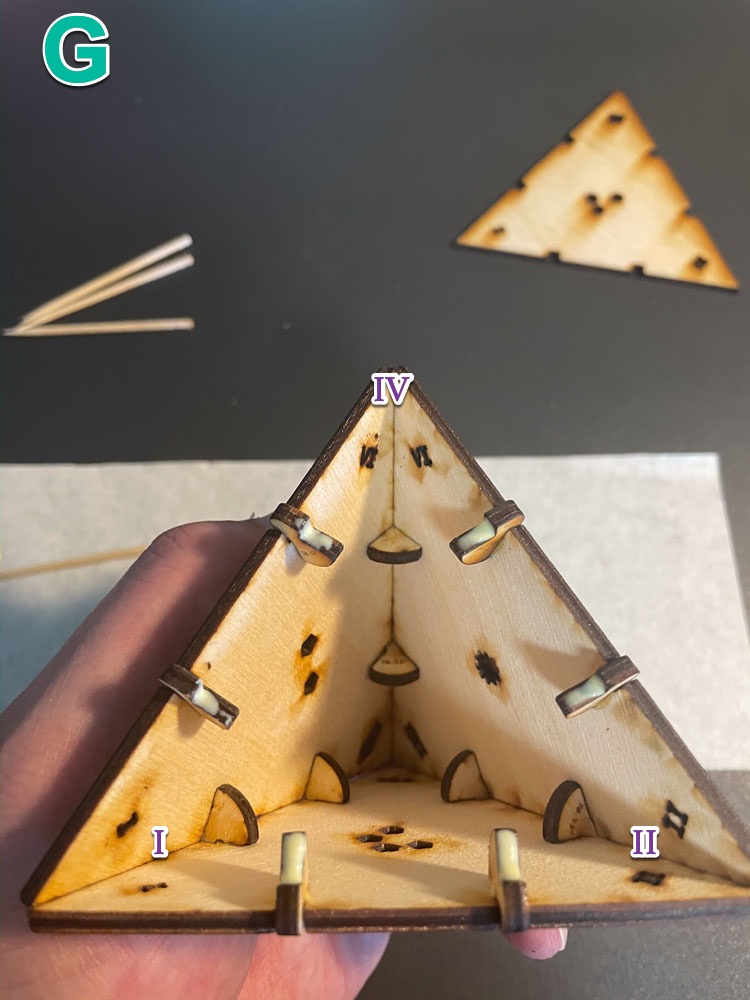
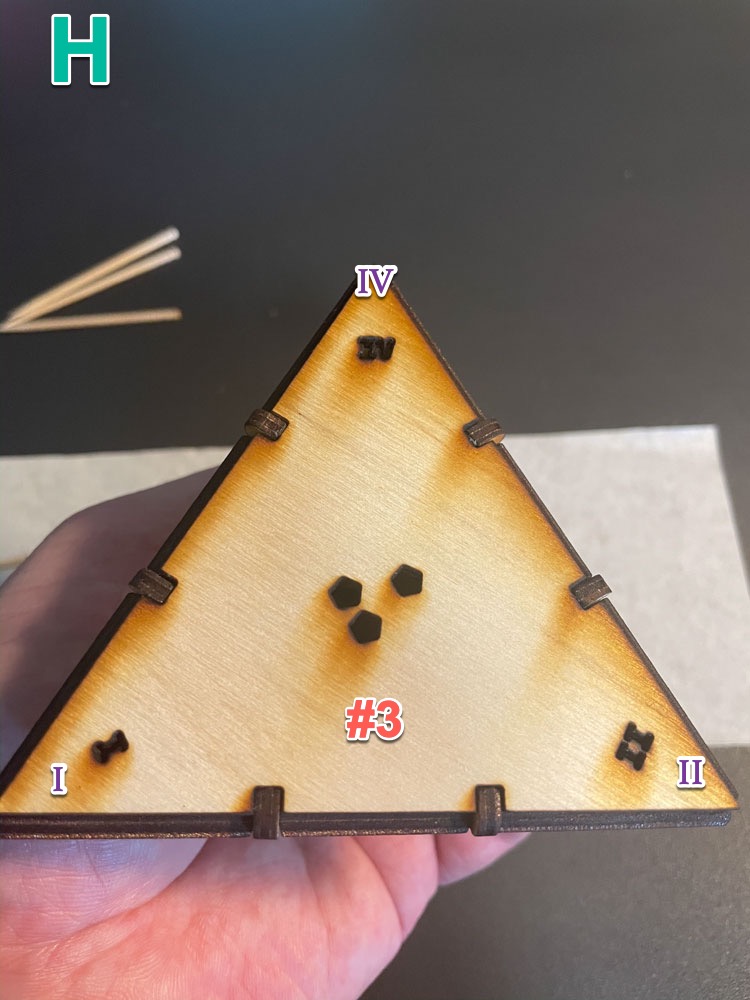
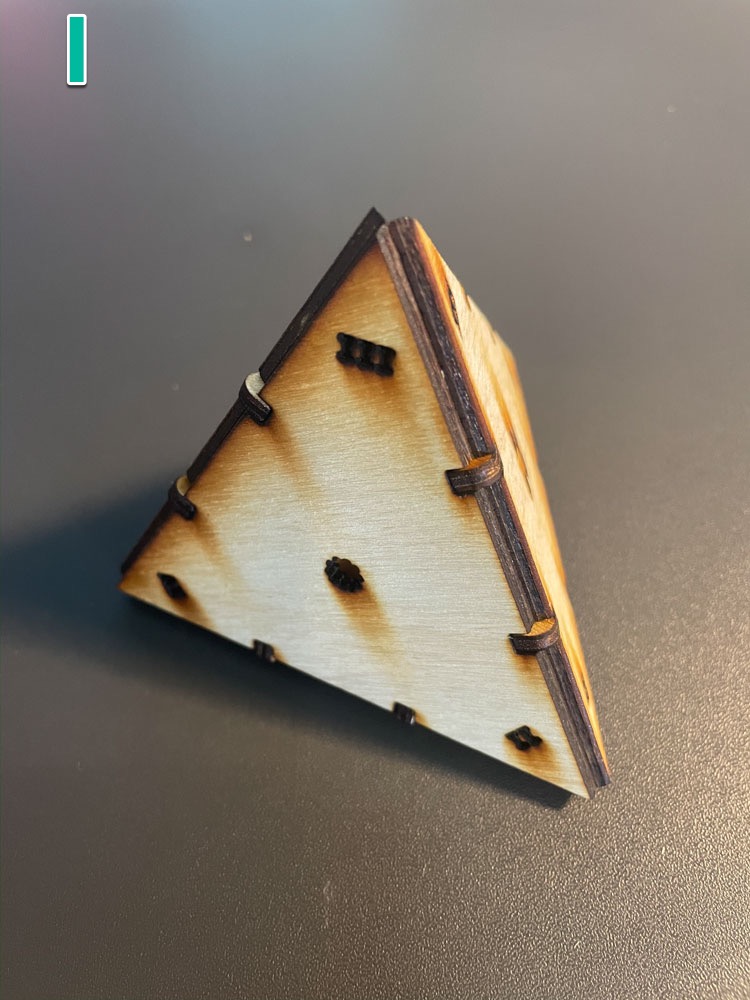
Congratulations! You have a beautiful peice of wood art!
Feel free to apply a light stain or coat with varnish or polyurethane for beauty and strength.